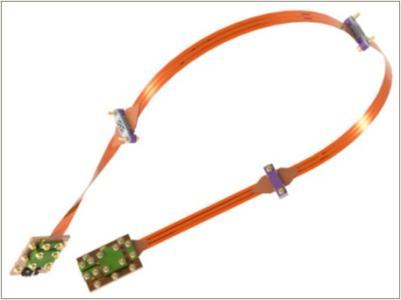High Temperature Superconductor Harness for use in cryogenic applications

This activity shall focus on the design, implementation and testing of a breadboard of a harness based on High Temperature Superconductor (HTS) material(s) that can allow to reduce the thermal parasitics in missions with cryogenic needs
Science missions such as SPICA (with the Safari instrument) and ATHENA (with the X-IFU instrument) require a complex cryogenic chain to ensure thermal bath temperatures in the order of 50 mK at the level of their respective detectors. The last cooling stage in these complex chains includes an Adiabatic Demagnetization Refrigerator (ADR) that takes advantage of the fact that the entropy of paramagnetic materials in a magnetic field is lower than when no field is present. The ADR requires the ability to generate a variable magnetic field that can be used to cyclically align the atoms in a paramagnetic salt pill so that the change in entropy can be used to cool the system. A variable magnetic field with a maximum of around 3 T is generated by a coil that requires an electric current in the order of 2 A.Routing such high currents to the most internal part of the cryostat is a challenging endeavor and a big contributor to the parasitics in the cryogenic chain.We are dealing with conflicting requirements, ideally the harness should have high electrical conductivity (low electrical resistance and therefore low Joule losses) and low thermal conductivity. This is not possible with normal metallic materials, where the thermal and electrical conductance are correlated. Superconductors on the contrary have a low/zero electrical resistance and a low thermal conductance and are therefore used as a lead-in wire for superconducting magnets. Currently, MgB2 wires, which have been developed for the NASA-JAXA Hitomi mission are used at the lower temperature stages as a lead-in wire. Due to the transition temperature of MgB2, these can only be used safely at a temperature below 30K and therefore result in a still significant heatload onto the low temperature stages of the Pulse Tube pre-cooler.In recent years, High Temperature Superconducting cables for power grids have been developed, capable of operating up to 80K. Whereas these commercial cables are designed for power capacities well above the needs for space missions and typically operate in an iso-thermal requirement, they can be modified to act as a lead-in wire for magnets, reducing significantly the heat load on the low temperature stages of two-stage pre-cooler.During the activity, various commercial HTS power cables shall be investigated and the most promising (customized) candidates shall be procured. The cables shall then be sliced to the size required for the current capabilities required for the specific application and any excess metallic material (typically copper and stainless steel) used by the commercial supplier to thermalize and ruggedize the wire shall be removed if needed. Technologies to encapsulate the HTS material from air with a low thermal conductivity material shall be developed and applied to protect the wires. In addition, a low thermal conductivity support structure of the wire might be required to prevent mechanical damage of the wires during launch and integration. Finally, an EM lead-in wire shall be created and tested to verify the critical functions of the design proposed in a cryogenic environment (as close as possible of to the most stringent environment of the two missions), verifying the long-term stability in air and survivability during launch.
